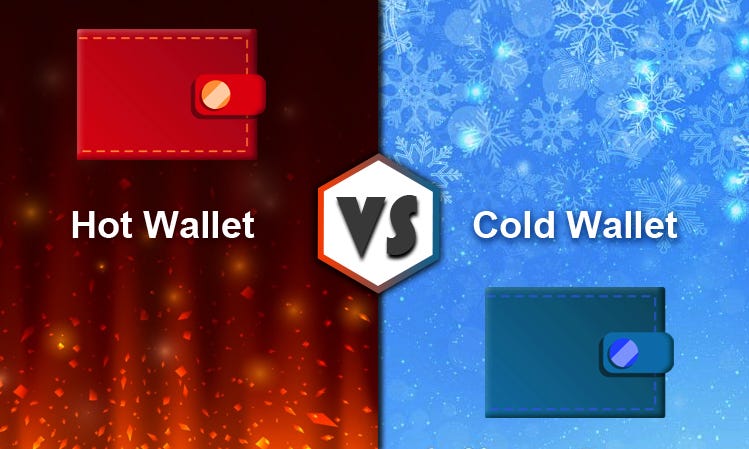Understanding the Distinction Between Bitcoin Hot Wallets and Cold Storage Wallets
Introduction
As the world of cryptocurrencies continues to evolve, the security of digital assets remains a paramount concern. Bitcoin, the pioneer of the cryptocurrency space, demands careful consideration of storage methods to protect against potential risks. Two prominent options for storing Bitcoin are hot wallets and cold storage wallets. In this article, we'll explore the fundamental differences between these two types of wallets, shedding light on their distinct characteristics and their respective benefits and drawbacks.
Bitcoin Hot Wallets: Balancing Convenience and Accessibility
A Bitcoin hot wallet is a digital wallet that is connected to the internet and readily accessible for transactions. Hot wallets come in various forms, including desktop applications, mobile apps, and online platforms provided by cryptocurrency exchanges. They offer several advantages:
Convenience: Hot wallets provide quick and easy access to your Bitcoin holdings, allowing you to make transactions on-the-go.
Instant Transactions: Hot wallets enable immediate transfers and trades, making them suitable for day-to-day transactions.
User-Friendly: Many hot wallets are designed with user-friendliness in mind, catering to both novice and experienced users.
However, the convenience of hot wallets comes with certain risks:
Security Vulnerability: Being connected to the internet exposes hot wallets to potential hacking and phishing attacks. Malicious actors may exploit vulnerabilities to gain unauthorized access to your funds.
Third-Party Dependence: Using an online hot wallet provided by an exchange means you're entrusting your funds to a third party. This introduces counterparty risk, as you rely on the exchange's security practices.
Bitcoin Cold Storage Wallets: Prioritizing Security
Cold storage wallets, also known as offline wallets, are designed to store your Bitcoin in a way that disconnects them from the internet. This isolation offers a heightened level of security and protection against online threats:
Offline Security: Cold storage wallets are immune to hacking and online attacks since they remain disconnected from the internet. Private keys are generated and stored offline.
Long-Term Storage: Cold storage is ideal for long-term investment, as it minimizes the risk of unauthorized access over time.
Personal Control: With cold storage, you have complete control over your private keys, reducing dependence on third parties.
However, cold storage wallets come with their own set of considerations:
Limited Accessibility: Cold storage wallets are less convenient for quick transactions and trading, as they require connecting to the internet to initiate transfers.
Physical Security: The security of a cold storage wallet hinges on the physical safety of the storage device, which can be vulnerable to theft, damage, or loss.
Conclusion
The choice between a Bitcoin hot wallet and cold storage wallet boils down to the trade-off between convenience and security. Hot wallets offer accessibility and quick transactions, but they expose your funds to online risks. Cold storage wallets prioritize security by keeping your assets offline, but they sacrifice some level of accessibility.
Balancing these factors is crucial, and many users opt for a combination of both storage methods. For everyday transactions, a hot wallet might be sufficient, while a significant portion of Bitcoin holdings can be kept in cold storage for long-term security. Regardless of the chosen approach, understanding the differences between these wallets empowers users to make informed decisions and safeguard their valuable digital assets.


